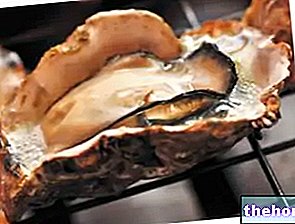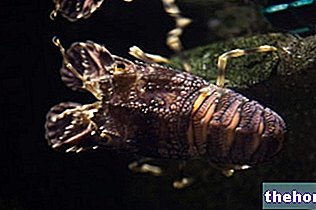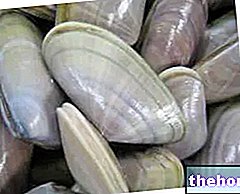Anchovy colatura is a food condiment. That of Cetara - province of Salerno, in the Amalfi coast, Campania region - enjoys the recognition of Traditional Agri-food Product (PAT).

Anchovy sauce has a liquid, slightly viscous or oily consistency. The color is amber, almost reddish - similar to chilli oil or maple syrup. It is produced, in fact, by pouring the brine used during the processing of preserved anchovies. More precisely, these are the fish caught - during the reproduction period - in the immediate coast between mid-spring and early summer; the casting takes about 6-7 months and is ready for the Christmas period.
Garum, a similar recipe, was already in use in Roman times. Traces of anchovy sauce can be identified as early as the Middle Ages, when the monks used to store fish in salted barrels - mbuosti - collecting what came out of the cracks.
. It mainly contains water, sea salt and fluids from anchovy meat.Anchovy colatura should not have a considerable energy supply, quite the opposite. Nevertheless, the caloric density of the food seems very different from one "label to the other" (from 100 kcal / 100 g to 200 kcal / 100 g of edible part ). The differences in energy terms are also 100%.
The osmotic power of salt has the sole effect of extracting water and certain minerals from the fish tissues. The amino acids and vitamins, having larger dimensions, do not pass - passively - the membranes, thus remaining inside the cells. Furthermore, the lipids are not soluble in water - but in fatty acids and solvents, not present in anchovy casting - which is why they are not effectively distributed in the surrounding liquid. Although limited, a certain degree of cell rupture occurs due to the processing of the fish - evisceration, decapitation, pressing - which determines a limited distribution of the cytoplasmic content. For these reasons, anchovy colatura contains only traces of: amino acids, fatty acids, cholesterol and both water-soluble and fat-soluble vitamins. Glucides - even lactose - fiber and gluten are completely absent.
Some argue that anchovy colatura boasts an excellent lipid profile. However, it must be considered that, if it is true that these blue fish contain more unsaturated chains than the saturated ones, it is equally true that their concentration in the anchovy sauce is so low as to be irrelevant. Moreover, given that polyunsaturated fatty acids are sensitive to oxidation, light and heat, it is conceivable that the percentage of intact omega 3 chains - fatty acids beneficial for the body - in anchovy casting is very limited. .
The anchovy sauce is rich in sodium, coming from the brine based on sea salt. Due to the osmotic effect, the concentration gradient and the cellular breakdown mentioned above, it is logical to deduce that a modest quantity of potassium, magnesium, calcium, iron, iodine and other minerals is also present in the anchovy casting. Once again, however, their quantity is not considerable.
The anchovy sauce could instead contain histamine, formed during the seasoning of the anchovies and the surrounding liquid. The quantity of purines, abundant in anchovies, should be contained in the colatura.
for the diet of overweight and obesity - as long as it is used as a condiment, that is in quantities of 5-10 g at a time - it is instead not recommended in a series of metabolic and digestive disorders.
The anchovy sauce, due to the high sodium concentration, is to be absolutely avoided in the preventive and therapeutic nutritional therapy against sodium sensitive primary arterial hypertension. However, it should be emphasized that the quantity of anchovy sauce per portion, even considering the low frequency of consumption, is so low that it has a relatively low impact on the sodium balance in the diet. For a person who scrupulously respects the doctor's instructions - DASH diet - it would therefore be sufficient, in order to balance the sodium concentration in the diet, to include anchovy sauce in a menu without salty foods. The high concentration of sodium can also harm the stomach. Having a particularly osmotic and dehydrating effect, anchovy sauce can irritate the mucous membrane, worsening conditions such as gastritis and peptic ulcer.
Let us not forget that a diet rich in salt is statistically associated with a greater probability of: overweight, metabolic diseases of various kinds, related complications, serious diseases of the stomach and intestines.
Colatura is logically to be avoided in case of allergy to anchovies. Furthermore, due to the likely presence of histamine, it is advisable not to include it in the diet menu against the relative food intolerance.
Anchovy colatura has no contraindications for celiac disease and lactose intolerance. Although, unlike anchovies themselves, colatura should not contain high percentages of purines, in case of hyperuricemia it is still a good idea to avoid or limit their consumption .
Anchovy sauce is to be avoided in the case of a vegetarian and vegan diet.
The frequency of consumption of anchovy sauce is sporadic, one-off, while the average portion corresponds to 5-10 g (about 5-20 kcal).
and for this reason it is often used to enrich seafood dishes or simple recipes - as is done with bottarga.
The anchovy sauce goes perfectly with extra virgin olive oil, tomato, olives, capers, chilli, garlic, oregano and other spices. It is excellent for seasoning pasta (semolina), generally long - spaghetti or linguine - or for flavoring vegetables in a pan - for example, escarole for stuffing stuffed pizza, chard or sautéed spinach. Various egg-based recipes are traditionally enriched with anchovy sauce.
in the period of March-July, the fish must be gutted, beheaded and placed in sea salt for about a day. Later, they are transferred to wooden barrels - chestnut or oak - stratified with more salt. They are then pressed with a weighted disc which, over time, lets the brine exuded by the anchovies emerge. This is then collected in glass jars and exposed to sunlight which increases its concentration by evaporation. After four or five months, in autumn, the matrix is poured back into the anchovy barrels through a small hole above the containers. After about a month, the dripping is removed and filtered with linen cloths. Fish, Molluscs, Crustaceans Anchovies or Anchovies Garfish Alaccia Eel Lobster Herring Lobster Whitebait Bottarga Sea bass (Sea bass) Squid Canocchie Scallops Canestrelli (Sea scallops) Capitone Caviar Mullet Monkfish (Monkfish) Mussels Crustaceans Dates Sea Fruits Fish Flour Fauna Fish stock Prawns Crabs Spider crab (Granceola) Halibut Sea salad Lanzardo Leccia Sea snails Prawns Cod Molluscs Octopus Hake Ombrina Oysters Sea bream Bonito Pangasius Paranza Anchovy paste Fresh seasonal fish Blue fish Puffer fish Swordfish Plaice Octopus (Octopus) Hedgehog of Sea Amberjack Salmon Sardines Sardines Scampi Cuttlefish Mackerel Sole Stockfish Surimi Sushi Telline Tuna Canned tuna Mullet Trout Fish roe Bluefish Clams OTHER FISH ARTICLES Categories Alcoholic Food Meat Cereals and derivatives Sweeteners Sweets Offal Fruit Dried fruit Milk and derivatives Legumes Oils and fats Fish andpeach products Salami Spices Vegetables Health recipes Appetizers Bread, Pizza and Brioche First courses Second courses Vegetables and Salads Sweets and Desserts Ice creams and sorbets Syrups, liqueurs and grappa Basic preparations ---- In the kitchen with leftovers Carnival recipes Christmas Light diet recipes Women's, mom's and dad's day recipes Functional recipes International recipes Easter recipes Celiac recipes Diabetic recipes Holiday recipes Valentine's Day recipes Vegetarian recipes Protein recipes Regional recipes Vegan recipes



























